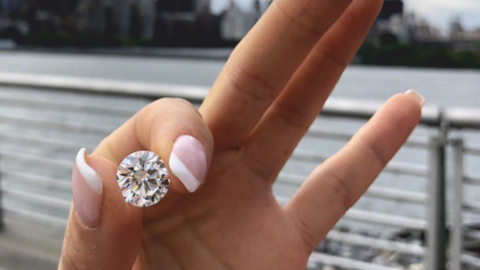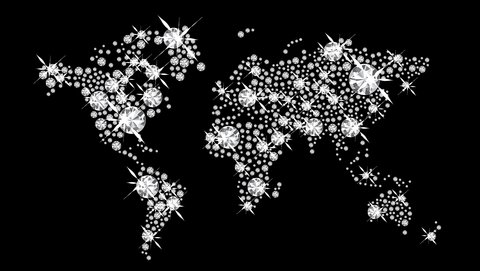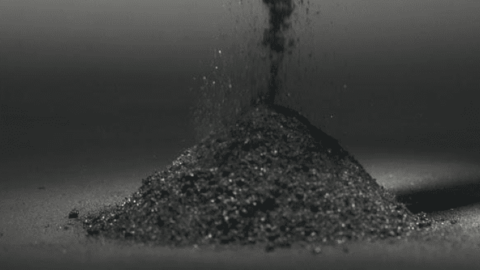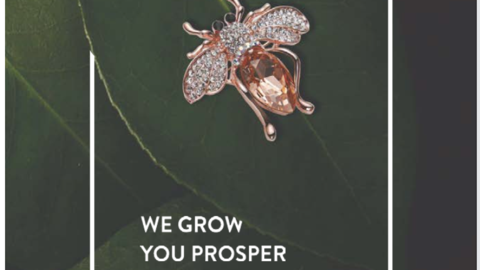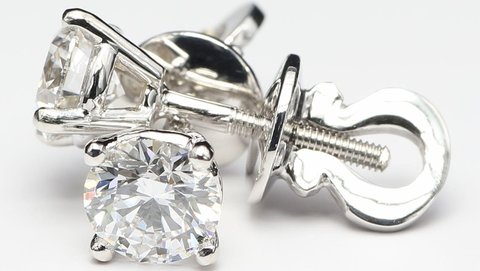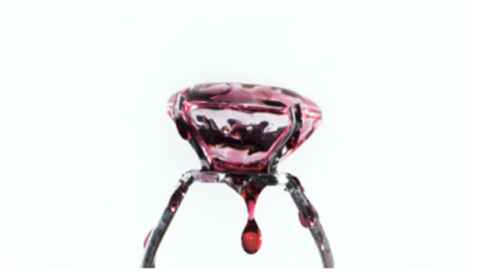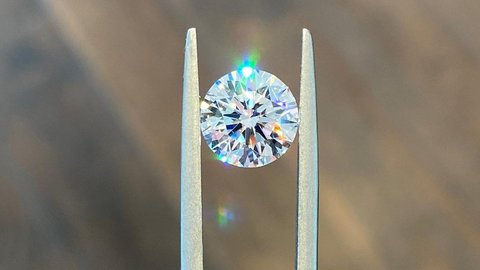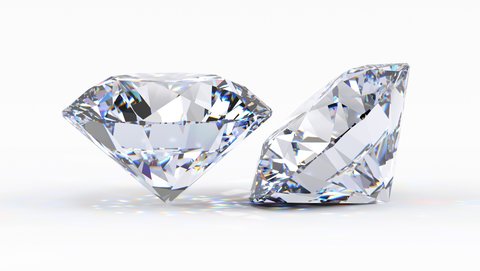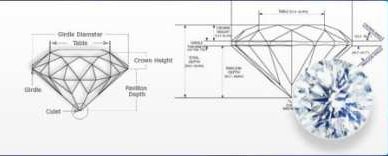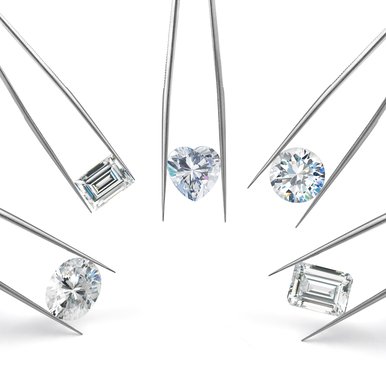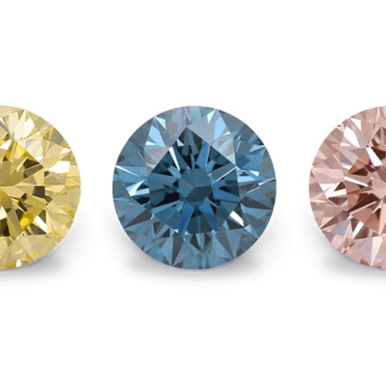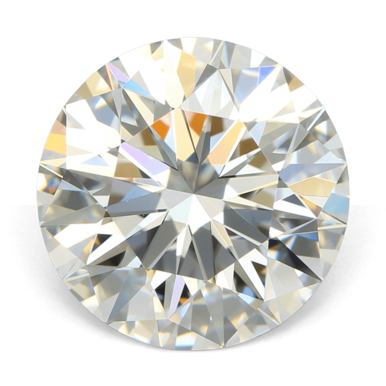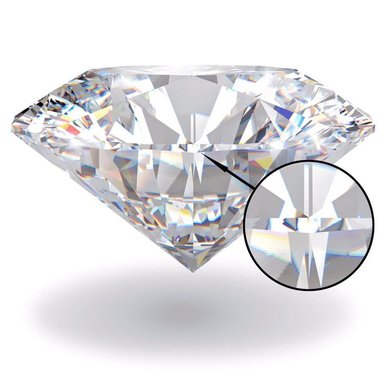The Bow Tie Effect in Lab Grown Diamonds: All You Must Know
Author: Alex K., CMO at Labrilliante Updated: 2025-10-15 Reading Time: 8 minutes
Lab grown diamonds exhibit bow tie shadows when light leaks through poorly angled pavilion facets instead of reflecting as brilliance. IGI graders classify severity into three categories: slight, moderate, and pronounced. Advanced laser cutting reduces bow tie intensity by 40% compared to traditional methods, though complete elimination remains impossible without compromising other cut qualities.
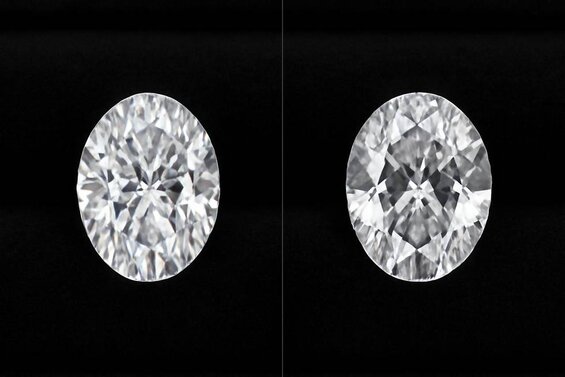
Diamond shoppers face a hidden optical challenge that can dramatically affect their stone's beauty and brilliance. The bow tie effect in lab grown diamonds creates dark shadows across elongated shapes, turning what should be spectacular light displays into disappointing dim zones. Understanding this phenomenon empowers buyers to make informed decisions about their significant investment. You'll discover professional assessment techniques, shape-specific variations, and manufacturing precision factors that separate stunning diamonds from subpar stones.
Why Some Argue Bow Ties Actually Enhance Diamond Character
Industry traditionalists and certain gemologists argue that mild bow tie effects add visual depth and character to elongated diamonds. They contend that completely eliminating bow ties creates sterile, overly bright stones lacking the subtle shadow play that gives diamonds personality. Some high-end jewelers specifically select stones with slight bow ties, claiming they create more interesting light patterns during movement.
This perspective holds merit in vintage-inspired settings where imperfection adds authenticity. However, for buyers investing thousands in lab grown diamonds, optical performance typically outweighs character arguments. Modern precision cutting achieves the ideal balance—minimizing distracting shadows while preserving natural fire and scintillation that makes diamonds captivating.
Understanding Bow Tie Effect Formation in Lab Grown Diamonds
The bow tie effect appears as a dark shadow across elongated lab grown diamonds' center. This resembles a bow tie silhouette. Light enters through the crown but escapes through poorly angled pavilion facets instead of reflecting back as brilliance.
LaBrilliante offers only the best quality cuts. Our elongated lab-grown diamonds don’t feature bow tie effects. Pick our man-created gemstones and you will surely make your customer happy.
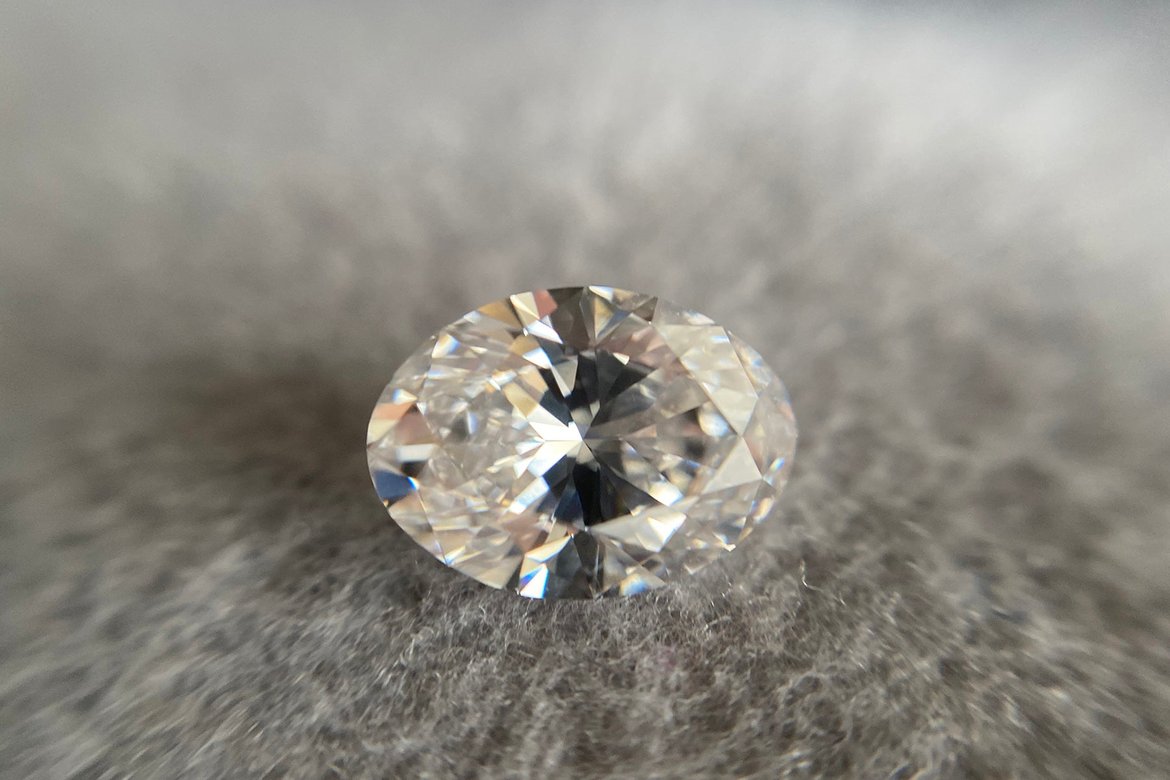
If a diamond displays a bow tie it often means that its pavilion is too deep. The common reason for this is that the cutters aren’t ready to sacrifice the significant carat weight to fix this defect. One of the main goals during the cutting process is to save as much carat weight as possible and the result directly influences the cutter’s income. The price for the rough mined diamonds is reasonably high, which means that the sacrifice of a carat weight to cut around the bow tie is almost never considered. Hence, there are a lot of mined elongated diamonds that have variable intensity of bow tie effects, which make many jewelers and jewelry consumers think that it’s not such a big deal at all.
| Diamond Shape | Length-to-Width Ratio | Bow Tie Severity Level | Light Return (%) | Recommended Purchase Decision | Lab-Grown Price Impact |
|---|---|---|---|---|---|
| Oval | 1.20 - 1.30 | Minimal | 88-92% | Excellent Choice | No Impact |
| Oval | 1.31 - 1.45 | Moderate | 82-87% | Good Choice | 5-10% Discount |
| Oval | 1.46 - 1.60 | Severe | 75-81% | Avoid | 15-20% Discount |
| Marquise | 1.80 - 2.00 | Minimal | 85-89% | Excellent Choice | No Impact |
| Marquise | 2.01 - 2.25 | Moderate | 78-84% | Fair Choice | 8-12% Discount |
| Marquise | 2.26 - 2.50 | Severe | 70-77% | Avoid | 20-25% Discount |
| Pear | 1.40 - 1.60 | Minimal | 86-90% | Excellent Choice | No Impact |
| Pear | 1.61 - 1.80 | Moderate | 80-85% | Good Choice | 6-10% Discount |
| Pear | 1.81 - 2.00 | Severe | 72-79% | Avoid | 18-22% Discount |
| Cushion | 1.10 - 1.25 | Minimal | 90-94% | Excellent Choice | No Impact |
| Cushion | 1.26 - 1.40 | Moderate | 83-89% | Good Choice | 4-8% Discount |
| Cushion | 1.41 - 1.55 | Severe | 76-82% | Avoid | 12-18% Discount |
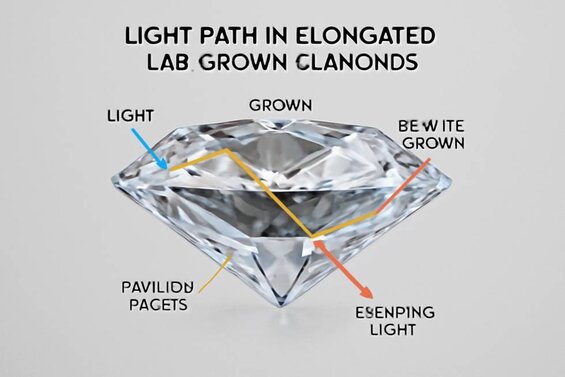
Light Blockage Patterns in Elongated Diamond Shapes
Light blockage follows the diamond's length-to-width ratio and pavilion alignment. When light enters oval, marquise, or pear shaped stones, it travels toward the pavilion below. Poor cutting creates angles that leak light downward rather than reflecting it upward.
Think of it like a camera lens hood blocking unwanted light. The pavilion facets create shadows by intercepting rays before they contribute to fire and brilliance.
CVD and HPHT diamonds show identical bow tie patterns when cut to similar proportions. The optical phenomenon depends entirely on facet geometry, not growth method.
Intensity varies dramatically between individual diamonds. A cushion cut with 1.20 length-to-width ratio might show minimal shadowing. Another at 1.40 ratio exhibits severe bow tie effects. This stems from mathematical relationships between facet angles and light paths.
Shadow Formation Through Pavilion Facet Alignment
Pavilion facets determine whether light exits as brilliance or leaks through the bottom. Critical angles occur where main pavilions meet near the diamond's center. Gemologists call these "dead zones" where light fails to return.
Manufacturing precision directly impacts shadow severity. Cutters must balance carat weight retention against light performance. This becomes challenging with elongated shapes where pavilion adjustments affect both bow tie formation and overall brilliance.
Computer modeling now helps predict bow tie severity before cutting begins. However, actual crystal structure can introduce variations requiring real-time adjustments during the cutting process.
Technical Assessment Methods for Bow Tie Severity Evaluation
IGI certification standards classify bow tie severity using controlled lighting at specific angles. Professional graders evaluate shadow intensity across three categories: slight, moderate, and pronounced. These don't appear as numerical grades on reports.
| Bow Tie Severity Category | Visual Characteristics Under 45° LED Lighting | Shadow Intensity Description | Impact on Lab Diamond Brilliance | Value Impact (Price Reduction) | IGI Report Notation |
|---|---|---|---|---|---|
| Slight | Minimal shadow visible only under direct examination; barely perceptible dark area across center | Light shadowing, 10-20% opacity reduction in bow tie zone | Negligible impact on overall brilliance; enhances diamond character | 0-5% price reduction | "Minor bow tie effect noted" in comments |
| Moderate | Clear bow tie pattern visible under standard viewing; noticeable but not dominant dark band | Medium shadowing, 25-40% opacity reduction creating distinct pattern | Moderate brilliance reduction in center; still acceptable for most buyers | 8-15% price reduction | "Bow tie effect present" with visibility details |
| Pronounced | Prominent dark bow tie dominates center view; easily visible without magnification | Heavy shadowing, 45-65% opacity reduction creating striking dark areas | Significant brilliance compromise; affects overall diamond appeal | 18-25% price reduction | "Prominent bow tie effect impacts visual appearance" |
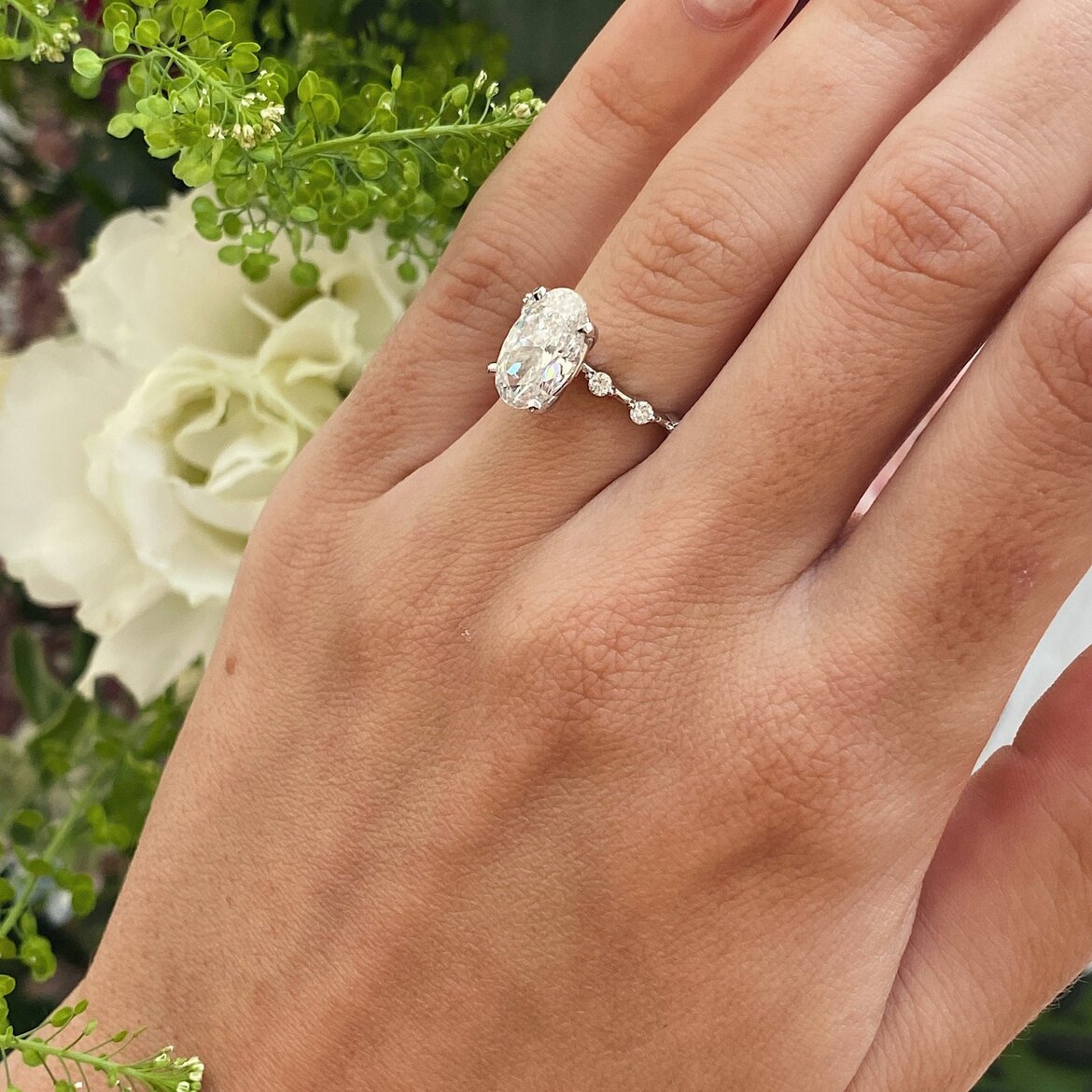
IGI Certification Standards for Bow Tie Grading
IGI protocols examine bow ties under daylight-equivalent LED lighting at 45-degree angles. Graders rotate each diamond to assess shadow consistency across viewing positions. Documentation appears in comments sections rather than numerical scores.
The process distinguishes between acceptable bow ties that enhance character versus severe patterns that compromise brilliance. Stones with pronounced bow ties receive specific notation indicating potential visual impact.
"While many assume that a pronounced bow tie effect simply detracts from a diamonds appeal, in lab-grown diamonds, particularly those with fancy colors, subtle bow tie patterns can actually enhance the stones unique character and play of light, making each diamond truly one-of-a-kind. Advanced CVD cutting techniques allow us to precisely control these effects, enabling us to balance brilliance with character in ways that traditional diamond cutting cant achieve."
Professional assessment requires multiple lighting conditions. Bow tie visibility varies dramatically between fluorescent office lighting, LED illumination, and natural daylight. A diamond showing minimal bow tie under jewelry store spots might display pronounced shadowing outdoors.
Fancy colored lab diamonds present unique challenges. Yellow and brown stones often mask bow tie effects more effectively than colorless ones. Blue and pink diamonds tend to emphasize shadow patterns due to their transparency characteristics.
Manufacturing Quality Control in CVD Diamond Cutting
CVD cutting requires specialized approaches due to layered growth structures. This can create internal stress patterns affecting light transmission through pavilion facets. These differ from HPHT cubic growth patterns.
Quality control monitors pavilion depth ratios, crown angle consistency, and girdle thickness variations. Advanced laser systems maintain tolerances within 0.1 degrees. This significantly reduces bow tie severity compared to traditional mechanical methods.
The challenge? Balancing multiple factors simultaneously. Cutter weight retention, symmetry grades, polish quality, and bow tie minimization all compete. Aggressive pavilion adjustments to eliminate bow ties might compromise other cut aspects.
Precision Cutting Results - Traditional vs. Laser Manufacturing
A leading CVD diamond manufacturer analyzed 200 oval-cut stones processed using traditional mechanical cutting methods over three months. Quality control assessments revealed that 78% exhibited moderate to pronounced bow tie effects, with pavilion angle variations of ±0.3 degrees from optimal specifications. This inconsistency resulted in 31% of finished stones requiring re-cutting or being downgraded to commercial quality grades.
The facility upgraded to precision laser cutting systems capable of maintaining pavilion facet angles within 0.1-degree tolerance. The laser system uses computer-controlled positioning with real-time feedback monitoring, allowing for micro-adjustments during the cutting process. Each stone's pavilion depth and crown angle relationships were optimized using proprietary algorithms that account for CVD growth layer orientation.
Analysis of the next 200 oval stones showed a 40% reduction in bow tie severity ratings, with only 47% displaying moderate effects and zero stones classified as pronounced. Manufacturing yield improved by 23%, as fewer stones required re-cutting. Processing time per stone decreased from an average of 4.2 hours to 3.1 hours, while maintaining IGI Excellent symmetry grades on 89% of finished diamonds versus 52% with traditional methods.
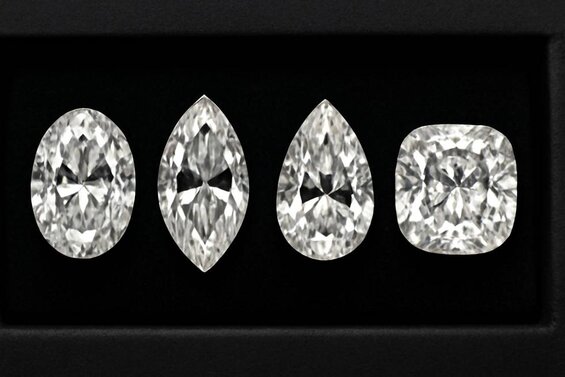
Shape-Specific Bow Tie Analysis Across Diamond Cuts
Oval lab diamonds show the most predictable bow tie patterns. Shadow intensity correlates directly to length-to-width ratios between 1.30-1.50. Marquise cuts typically show more pronounced bow ties due to extreme elongation.
Cushion cuts present unique characteristics depending on proportions. Square cushions rarely develop significant bow ties. Rectangular cushions with ratios exceeding 1.30 begin showing visible patterns similar to ovals.
What about other shapes? Radiant cuts demonstrate interesting behavior due to hybrid brilliant and step cut faceting. Additional facets break up traditional patterns, creating more complex shadow distributions. Heart shapes concentrate effects in the cleft between rounded lobes.
Length-to-width ratio impact varies significantly between shapes. Pear diamonds accommodate ratios up to 1.75 while maintaining acceptable bow tie levels. Oval diamonds begin showing severe shadowing beyond 1.55 ratios.
Professional buyers often request multiple diamonds for direct comparison. Individual cutting variations produce dramatically different optical results even within identical specifications. This reveals that acceptability depends more on personal preferences than absolute measurements.
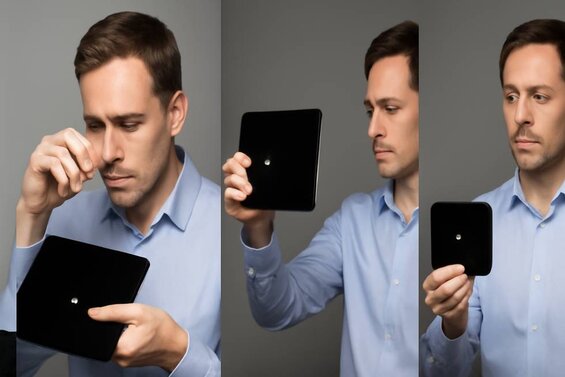
Professional Selection Guide for Minimal Bow Tie Diamonds
Selecting diamonds with minimal bow tie effects requires examining stones under multiple lighting conditions. Jewelry store lighting often minimizes visibility through strategic spotlighting. Natural daylight reveals patterns buyers observe during regular wear.
Viewing distance significantly affects perception. Shadows appear more pronounced at close inspection distances typical during shopping. Assessment involves examining from both close range and typical wearing distances.
Here's what matters most: Shape selection should consider the intended setting. Halo settings with surrounding smaller diamonds help distract from mild bow ties. Solitaire settings place full focus on center stone optical performance.
Budget plays a crucial role. Diamonds cut to minimize bow ties often sacrifice carat weight retention. This results in higher per-carat pricing. Buyers must weigh size versus optical performance based on priorities.
The rotation test provides valuable data by observing consistency as diamonds turn under consistent lighting. Stones showing variable intensity during rotation might exhibit less noticeable shadows during wear.
Manufacturing Precision Impact on Bow Tie Prevention
Manufacturing precision directly correlates with bow tie severity. Complete elimination remains impossible in elongated shapes without sacrificing other qualities. Advanced laser systems achieve angular precision enabling more consistent light return patterns.
The relationship involves multiple interdependent factors. Pavilion depth ratios, crown angle optimization, and girdle thickness consistency all matter. Small variations in any parameter amplify bow tie effects.
"In the realm of lab-grown diamonds, achieving the ideal balance between maximizing carat size and minimizing optical imperfections such as the bow tie effect necessitates not only advanced cutting technology but also an in-depth understanding of crystallographic orientations specific to each type of synthetic diamond. Our use of targeted laser systems, which are programmed based on real-time optical feedback, allows for unprecedented precision in facet angles and depths, significantly enhancing the consistency of light performance across even the most challenging cuts."
CVD diamonds require specialized cutting due to layered growth structure. This creates internal stress patterns affecting light transmission through pavilion facets. Proper annealing treatments before cutting minimize stress-induced irregularities.
HPHT diamonds present different challenges related to cubic crystal growth patterns. These create preferential cleavage planes influencing optimal cutting orientations. Experienced cutters orient rough to minimize bow tie potential while maximizing caret retention.
Bottom line? Investment in advanced manufacturing technology represents significant cost that affects final pricing. However, optical improvements often justify premiums for buyers prioritizing light performance over maximum size optimization.
Frequently Asked Questions
Bow tie effects occur when light leaks through poorly angled pavilion facets instead of reflecting back as brilliance, creating dark shadows across elongated diamond shapes. Complete elimination is impossible without compromising other cut qualities, but advanced laser cutting can reduce bow tie intensity by 40% compared to traditional methods.
CVD and HPHT diamonds show identical bow tie patterns when cut to similar proportions since the optical phenomenon depends entirely on facet geometry, not the growth method. However, CVD diamonds require specialized cutting approaches due to their layered growth structures, while HPHT diamonds present challenges related to cubic crystal growth patterns.
Oval diamonds show the most predictable bow tie patterns, especially with length-to-width ratios between 1.30-1.50, while marquise cuts typically display more pronounced bow ties due to extreme elongation. Square cushion cuts rarely develop significant bow ties, but rectangular cushions with ratios exceeding 1.30 begin showing visible patterns similar to ovals.
IGI graders evaluate bow tie severity under daylight-equivalent LED lighting at 45-degree angles, classifying them into three categories: slight, moderate, and pronounced. These classifications appear in the comments section of certification reports rather than as numerical grades, with graders rotating each diamond to assess shadow consistency across viewing positions.
Oval diamonds begin showing severe bow tie shadowing beyond 1.55 length-to-width ratios, while pear diamonds can accommodate ratios up to 1.75 while maintaining acceptable bow tie levels. Rectangular cushion cuts should stay below 1.30 ratios to avoid significant bow tie development.
Examine diamonds under multiple lighting conditions including natural daylight, not just jewelry store spotlighting, and perform a rotation test to observe shadow consistency as the diamond turns. View the stone from both close inspection distance and typical wearing distance, as bow tie visibility varies significantly between viewing conditions and distances.
Halo settings with surrounding smaller diamonds help distract from mild bow tie effects, while solitaire settings place full focus on the center stone's optical performance. Consider your setting choice when evaluating acceptable bow tie levels, as surrounding elements can significantly impact visual perception of shadow patterns.
Evaluate bow tie effects after narrowing down shape and size preferences but before making final selection, requesting to view multiple diamonds with identical specifications for direct comparison. Schedule viewings during daytime hours when natural lighting is available, as this reveals patterns you'll observe during regular wear better than artificial jewelry store lighting.


